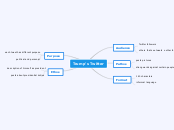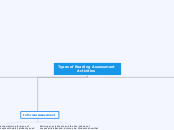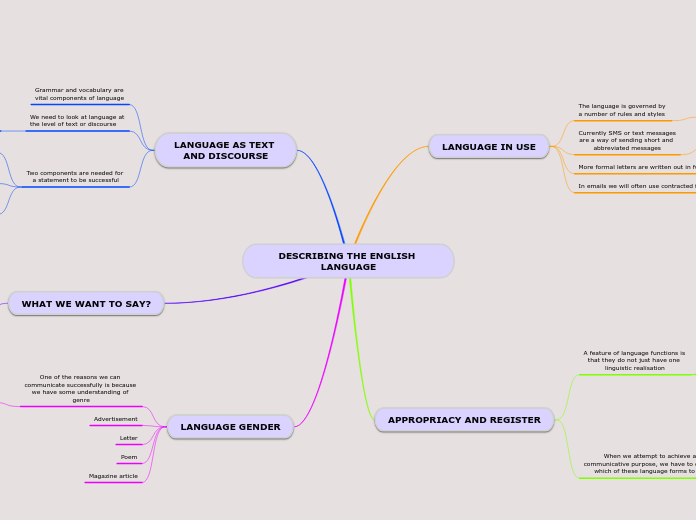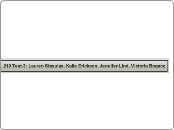Organization Theory
Boundariless
Removes all traditional barriers
Lazze fair
No clear authority
Difficult to manage
quicker when solving problems
Freedom and creativity
flexible rules
Network structure
Outsource to contractors, which is a key responsibility
needs excessive policies and procedures
Contractor may lack loyalty to the business
Extra administration needed
opportunities to develop
Saves money and is more specialized
teamwork, which leads to innovative ideas.
Team structure
Organize into independent teams
lack of coordination in the business
Not as well organized and can lead to inefficiencies
lack of job specifications
flexibility
Improves teamwork and generates ideas/creativity
simplicity
Matrix structure
Organize into cross functional teams (2 bosses)
Double deadlines which leads to stress
Double workload
employees are loyal to their department
Improve communication through the company
Clarity of Reporting Structure, this is because, every group of employees have a clear boss.
Divisional structure
Organized into departments by customer, product, geographic process
Example: Rogers - personal customers and business customers
Duplication (more employees) of roles in departments
Leads to potentially better service more focused on service/efficient production
Functional structure
Organized by key business skills
Communication issues with other departments
Clear lines of authority specialized
Modern Working Arrangements
Job Sharing
When two employees cooperatively share the same job. Involves two people who each work part time to fill one full-time position.
Different ways that each employee has of doing things can lead to conflict
Cost of benefits might rise
May be asked to pay for a cross-over day which increases employment costs
Learning new ways of working together
Easier coverage for missing work because of things like family matters, being ill and scheduled vacations or days off
Easier workload, less stress and more work satisfaction which can lead to:
Effective coworker relationships
Positive customer service
Increased motivation
Flextime
Flexible system where employees get alter their work hours with certain limits, giving them the opportunity to choose their start and finish times
May lose sense of family
May complicate daily operations
Employees can abuse the policy
Can be confusing and time consuming
Schedule employee hours to fit peak demand times of company
Increased feeling of personal control
Attracts more qualified employees
Increases productivity
Condensed Working Week
Employee is working a full time job (35-40 hours), but they do not have to work every single day of the week, as they just need to fill in all of their hours. The employee has the opportunity of getting one or two days off.
Employees could be working unauthorized overtime
Physically and mentally draining
Less leisure time
Can cause understaffing during some periods
Higher fatigue
Enhances company image as a family-friendly place to work
Reduced commuting time and gas expenses
Increased productivity from having uninterrupted and focused time at your workplace
You can have a full day off during each workweek while still making full time income
Telecommuting
Work arrangement in which the employee works outside the office, instead working from home or a place close to home and making use of the internet, telephone, and email.
Extremely self motivated
Working from home can isolate the employee, as they are not around coworkers
Have to find a productive place to work (this can be difficult for some)
Can make for a more productive employee, as they do not have the distraction of a typical office space
Gives employee more flexibility to balance work and personal obligations
More freedom regarding employees work location and work hours
Job Enlargement
Increasing the scope of a job through extending the range of its job responsibilities and duties generally within the same level
Lack of expertise
Can worsen job performance
Heavy workload
Improves and remains motivation
Learn new skills
Job Enrichment
Motivational technique used by organizations to give an employee greater satisfaction in his work by assigning them additional responsibilities previously reserved for their manager or other higher-ranking positions
Non-participant conflicts
Increase in workload
Poor performance
Employees can learn more vertical skills that equip them for a higher level position
Company can operate more efficiently
Employees are motivated to produce top work
Job Rotation
Management approach where employees are shifted between two or more jobs or assignments in order to expose them to and teach them all aspects of an organization
Possibility of ending up with disgruntled employees
Can be time consuming
Can be costly
Can create anxiety and stress among workers
Reduces boredom
Encourages development
Helps identify where employees work best
Job Simplification
Job design technique where jobs are broken up into relatively easy tasks. This work arrangement intends to achieve greater productivity through decreased application of physical and mental effort
Cons
Greater chance for accompanying issues of elevated error rates and absents
Greater potential for boredom among workers
Lower staff job satisfaction
Pros
Staff can be easier to replace
Staff can be less difficult to supervise
Quick process of training staff
Relatively easy
Mechanistic vs. Organic Organizations
Organic Organizations
Boundaryless
Network
Informal
Many
Flexible - less specialized
Flat
Span of Control
Few managers - wide
Rules and Procedures
Few rules
Mechanic Organization
Organizational Structures
Divisional -> matrix
Functional
Formal/Informal
Formal
Authority (Centralized or Decentralized)
Team
Few
Specialized
High Degree
Tall/Flat
Tall
Lots of managers - narrow
Rules and procedures
Lack of rule
Flat organization
Few levels of authority
Tail organization
Many levels of authority
Chain of command
Number of levels in the hierarchy of the firm
Decentralized
Lower level employees are empowered to make decisions
Centralized
Top managers make decisions
Span of control
Number of employees directly under you (wide > a lot - narrow > a few)









